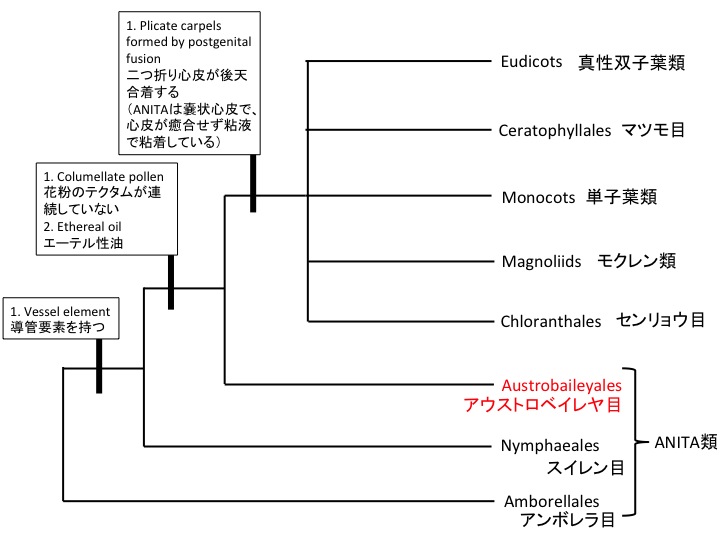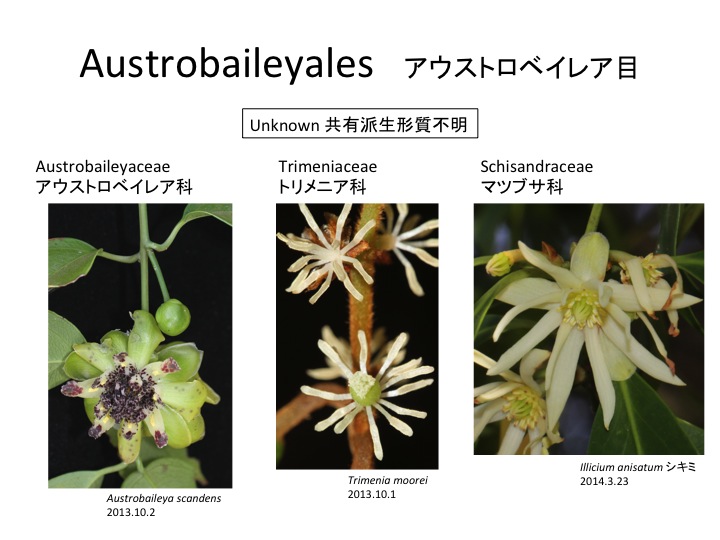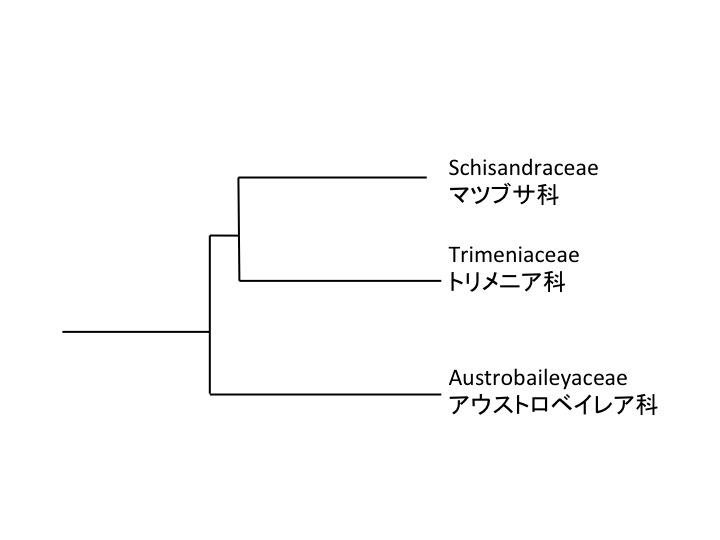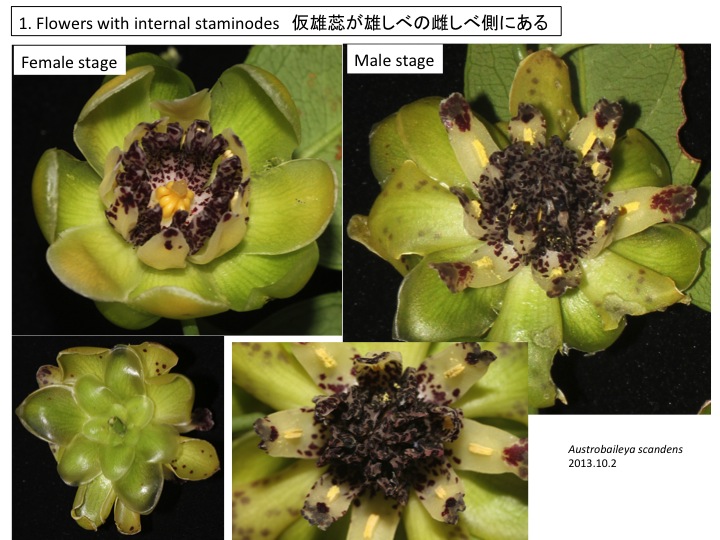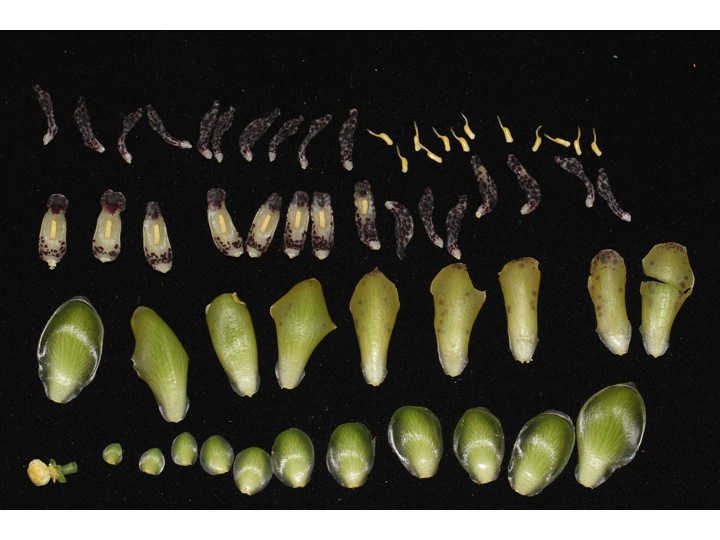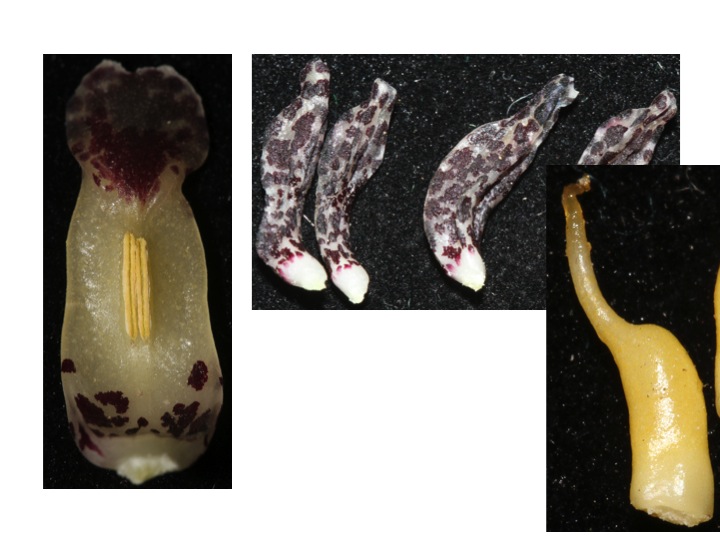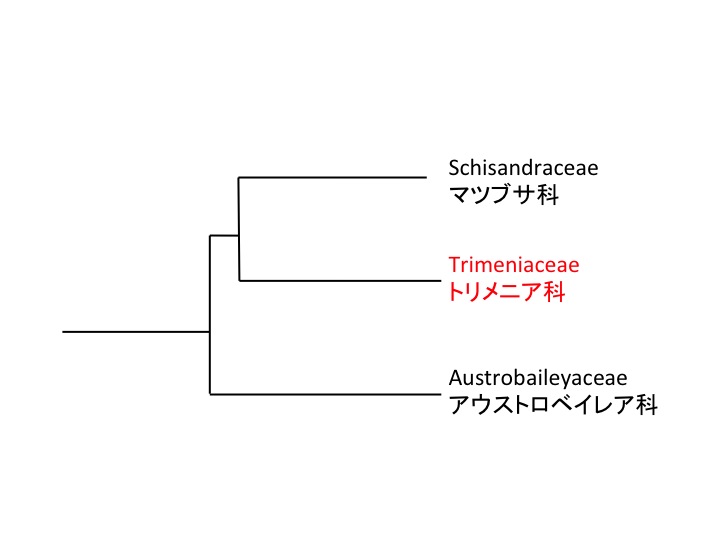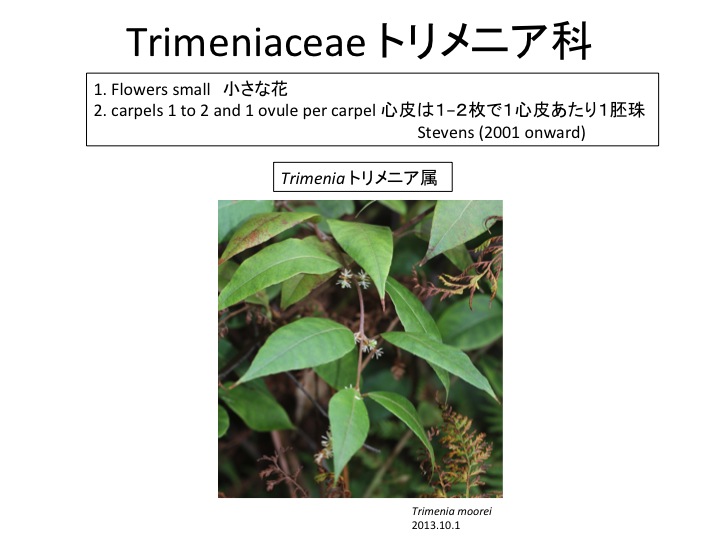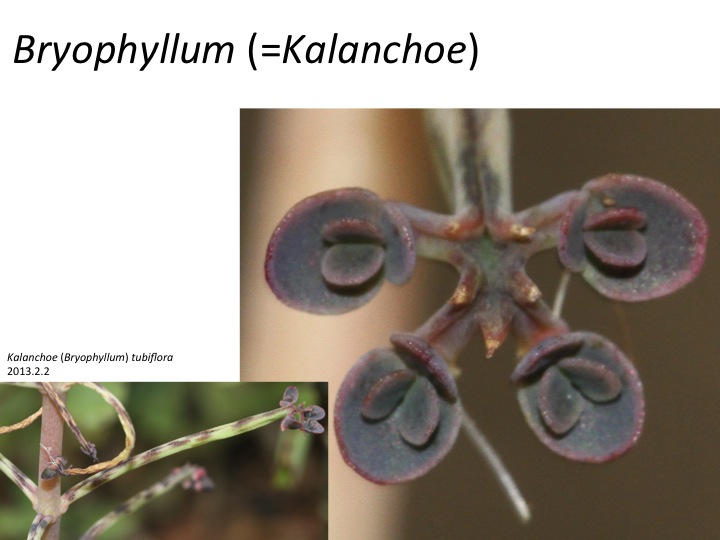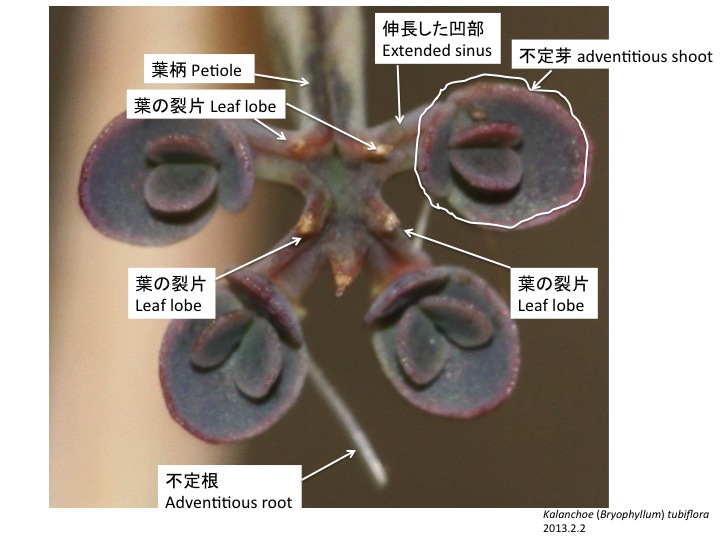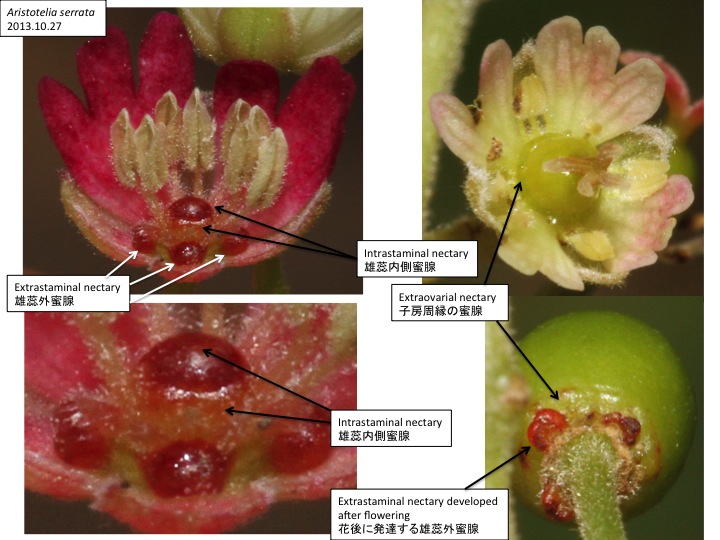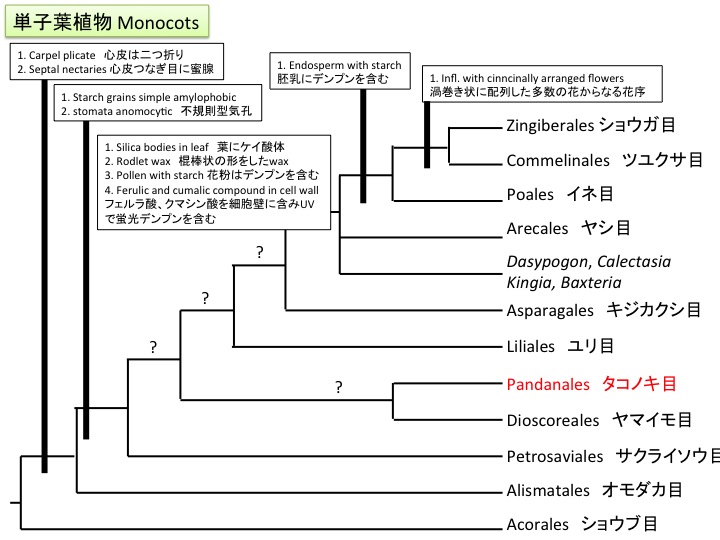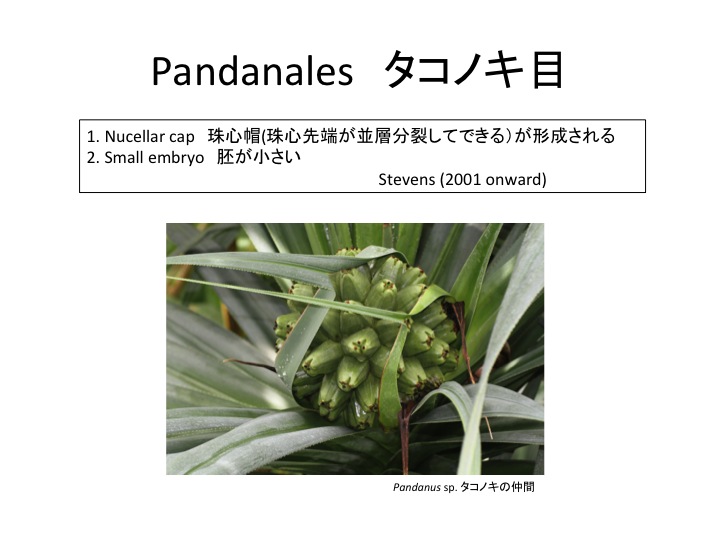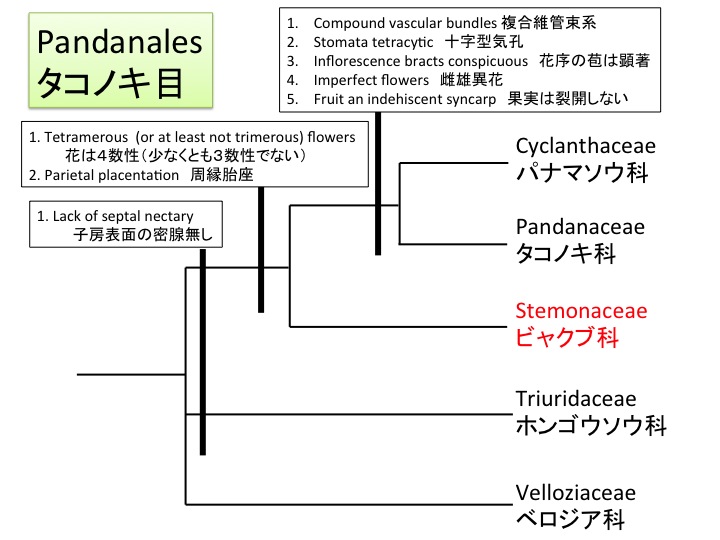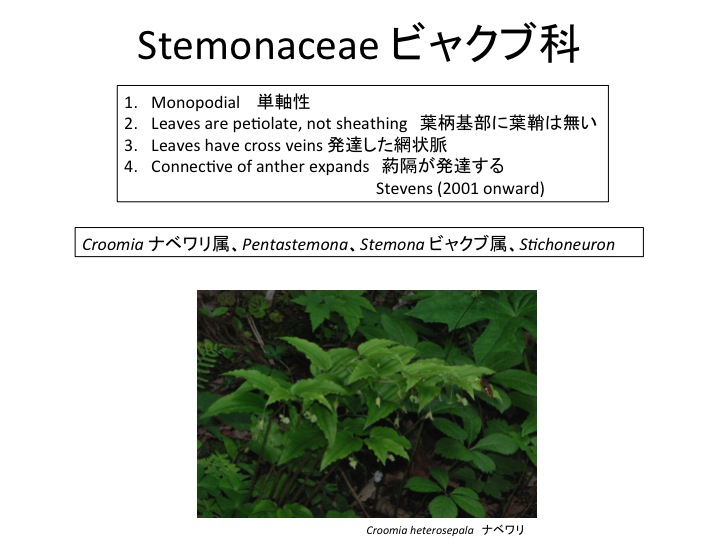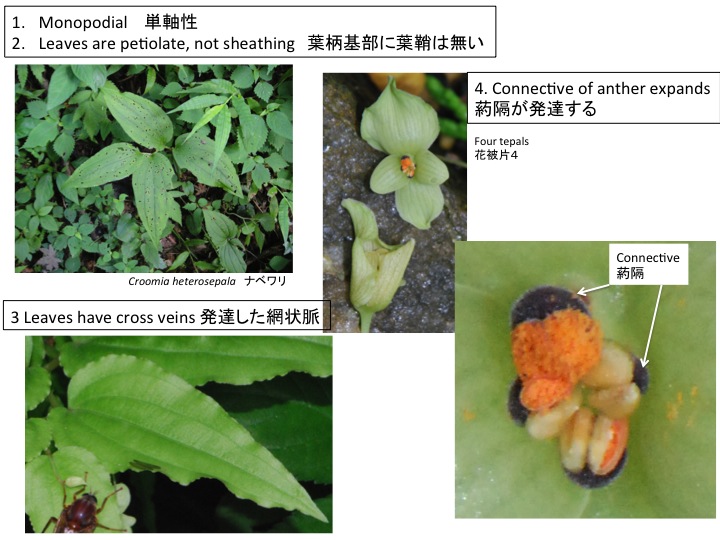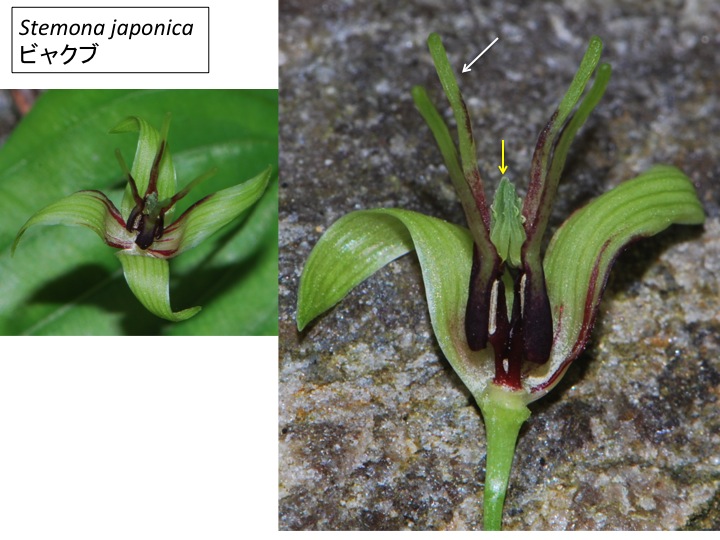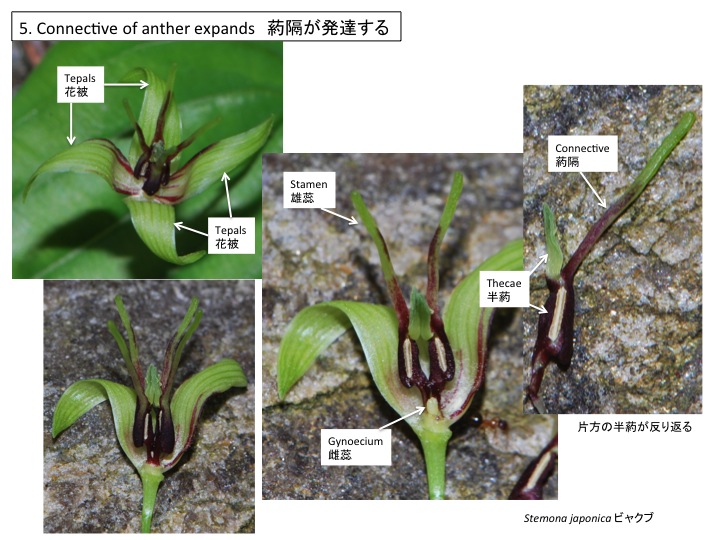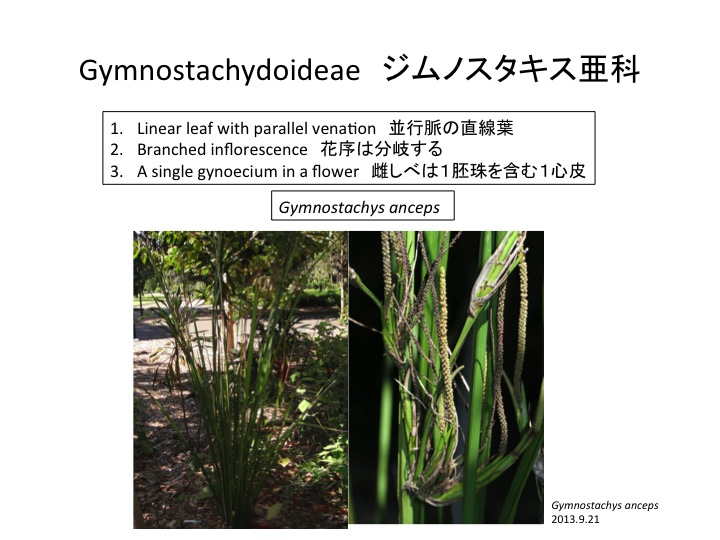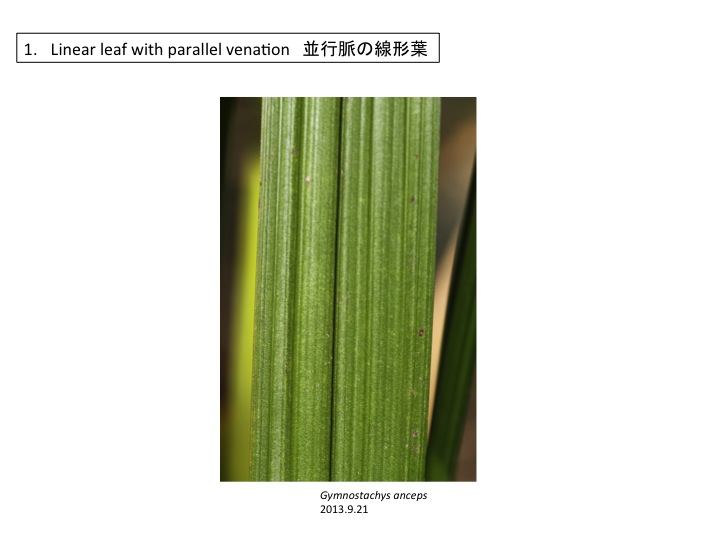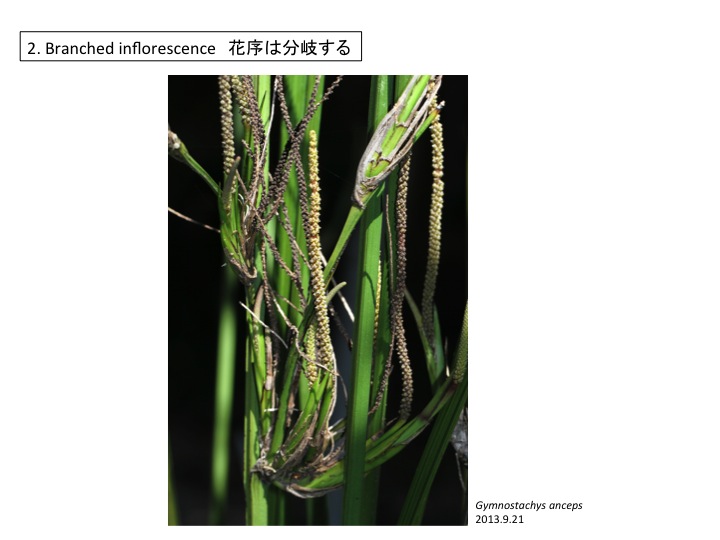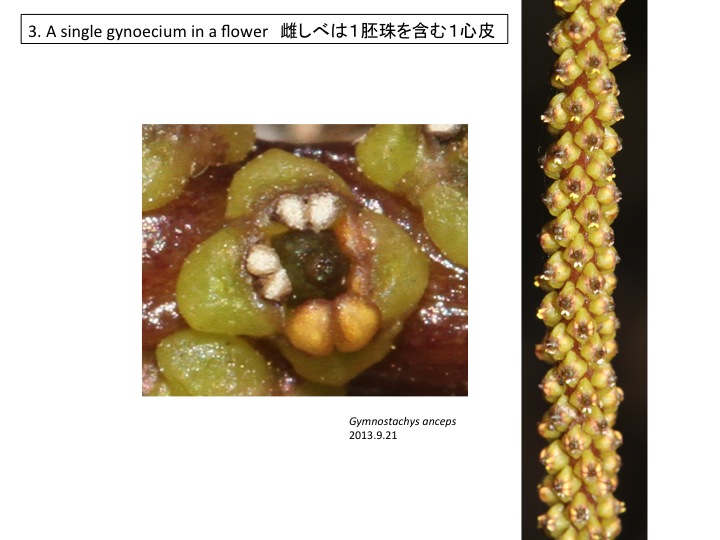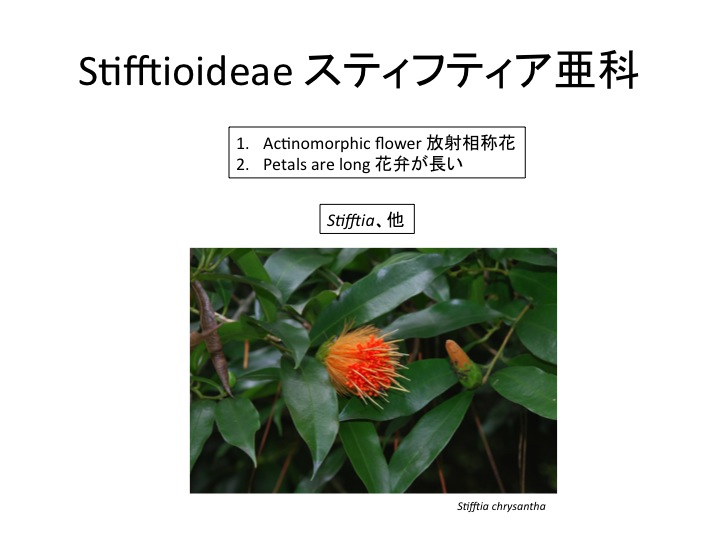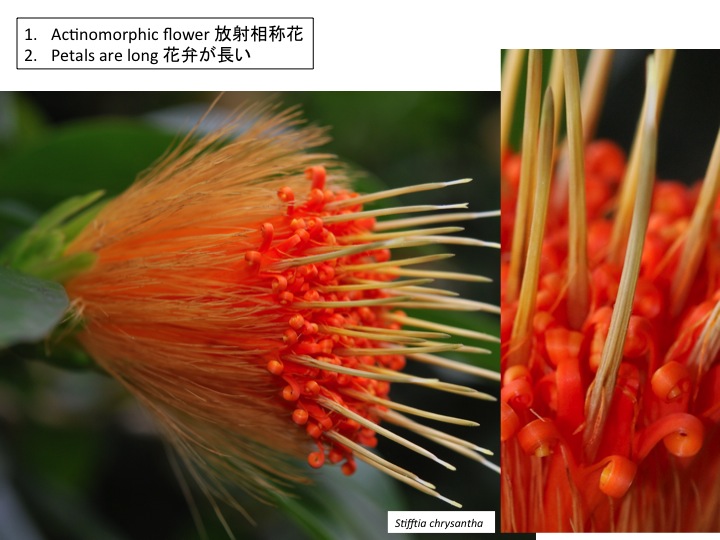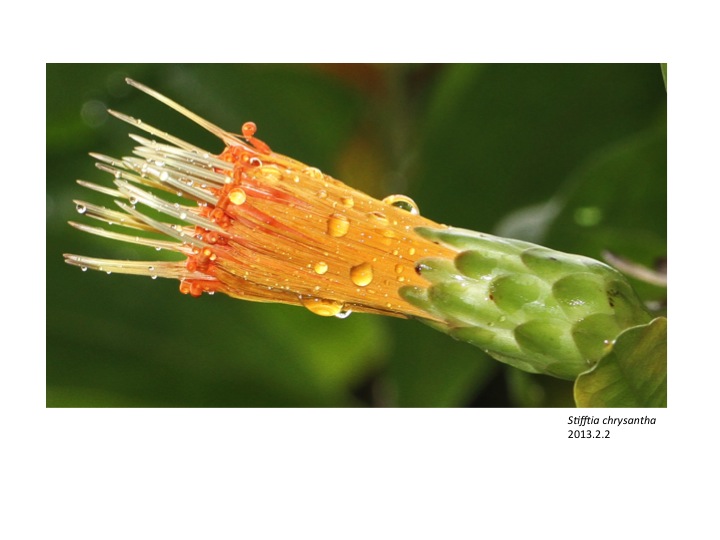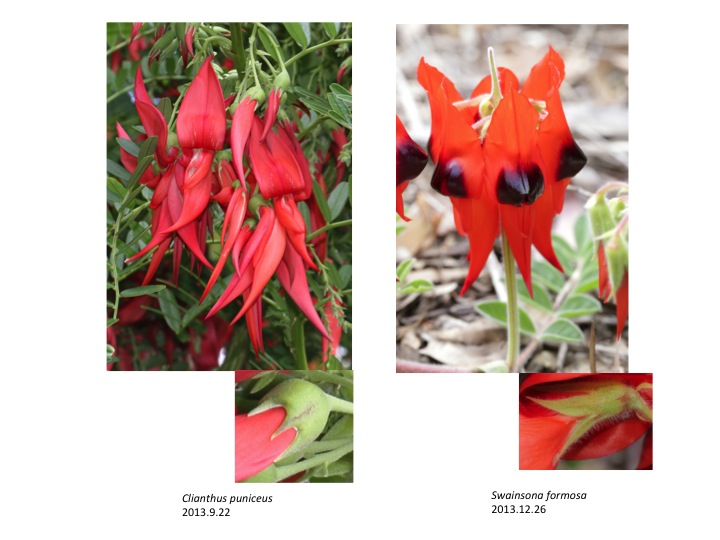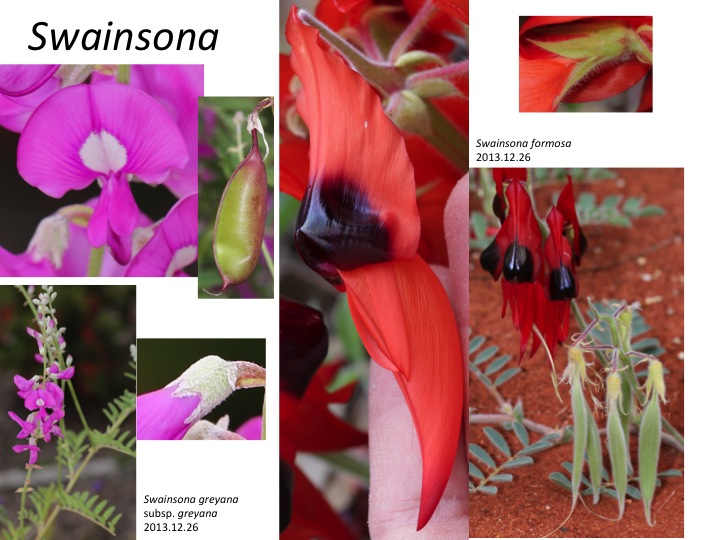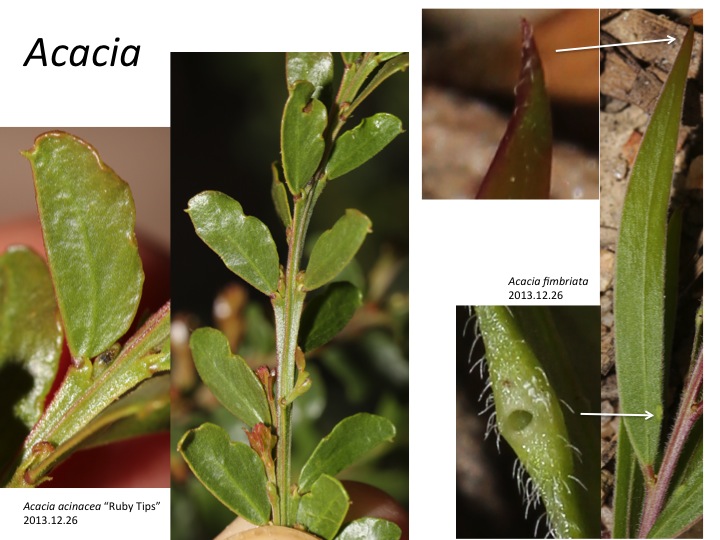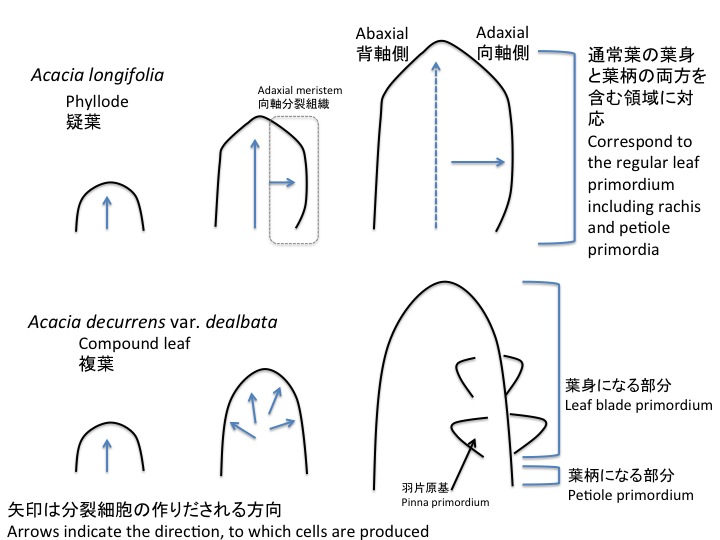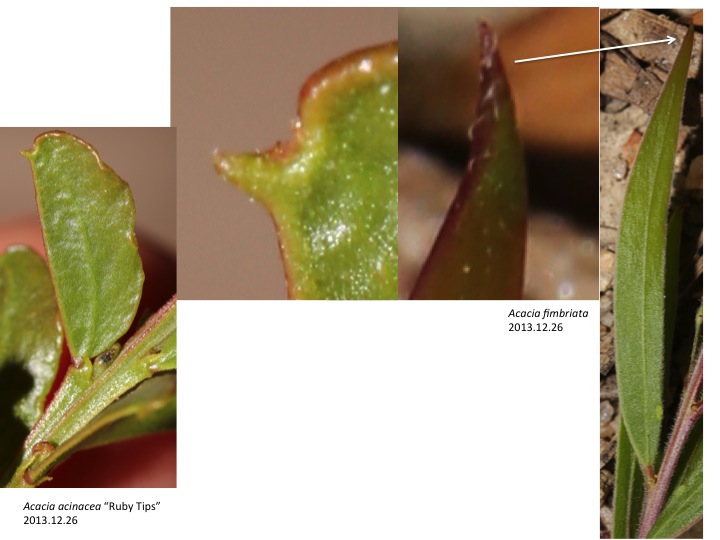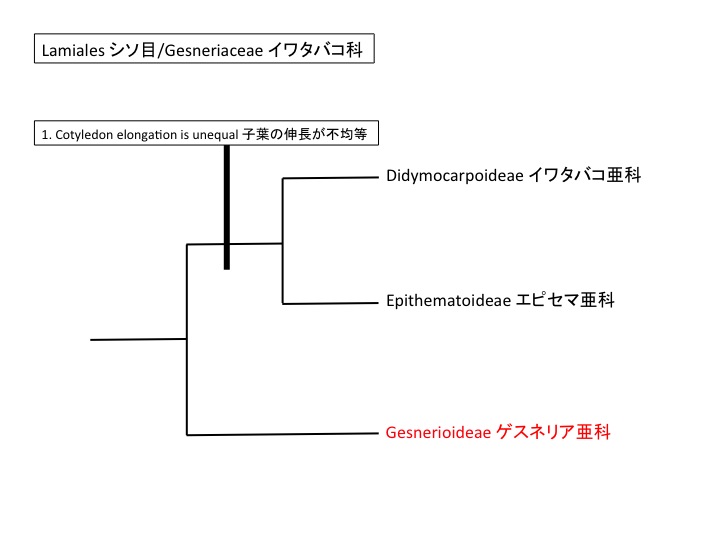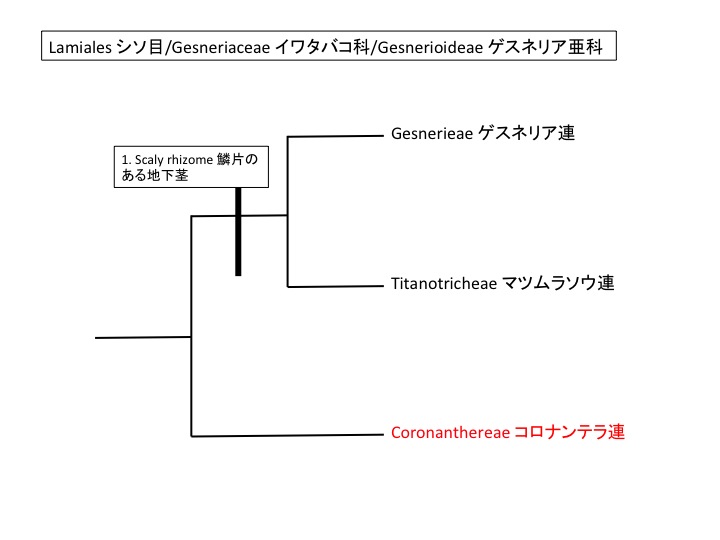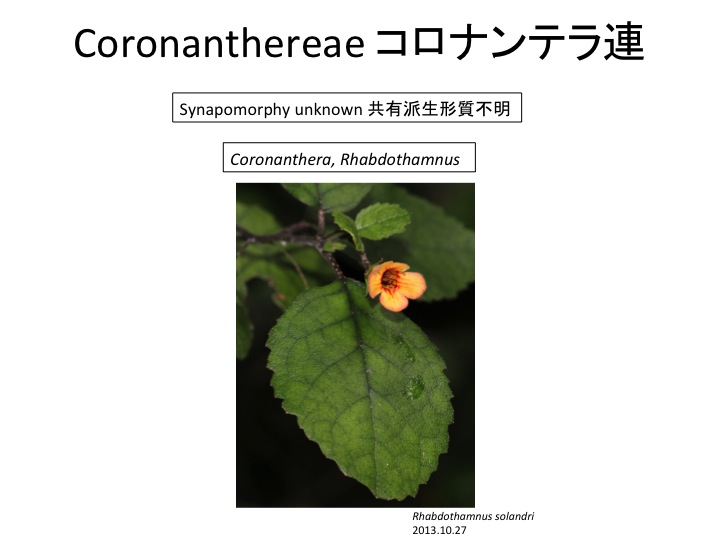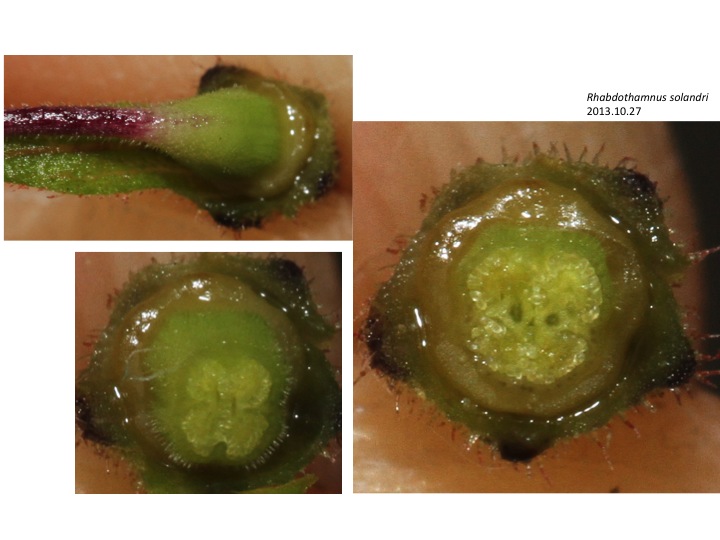ANITAは基部被子植物の総称で側系統群。Amborellales, Nymphaeales, Illicidaceae, Trimeniaceae, Austrobaileyaceaeの頭文字をとったもの。真正双子葉類、マツモ目、単子葉類、モクレン類、センリョウ目の類縁はまだはっきりしていない。
ANITA group is paraphyletic and includes Amborellales, Nymphaeales, Illicidaceae, Trimeniaceae, and Austrobaileyaceae.
(1) Hardened mesotestal cells 外種皮中層の細胞が硬化、(2) Unilacunar nodes 単隙性葉脈分岐、の2つの形質が共有派生形質(Judd et al. 2008, Stevens 2001 onward) だが、肉眼レベルで観察できる共有派生形質は見つかっていない。
(1) Hardened mesotestal cells and (2) Unilacunar nodes are synapomorphic characters(Judd et al. 2008, Stevens 2001 onward) but no synapomorphic characters visible with naked eyes are not found.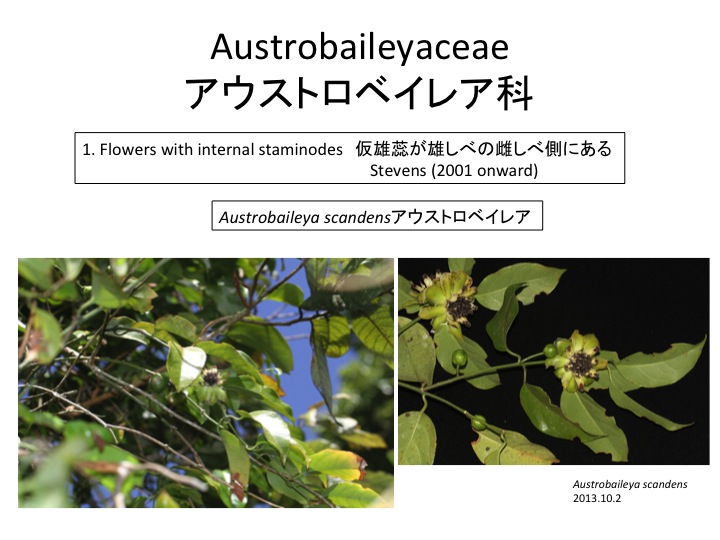
アンボレラ目、スイレン目と同じように花被(花弁と萼片を併せた呼び方。両者を区別しにくいときに用いる)は、螺旋状に配列し、緑色の葉状の花被から色の付いた花弁状の花被へと順次に変化する。このことから、螺旋状に配列し、順次に変化する花被は、被子植物の原始形質(祖先が持っていた形質)である。
Austrobaileyales has spirally arranged tepals as Amborellales and Nymphaeales have, indicating this is a plesiomorphic character in angiosperms.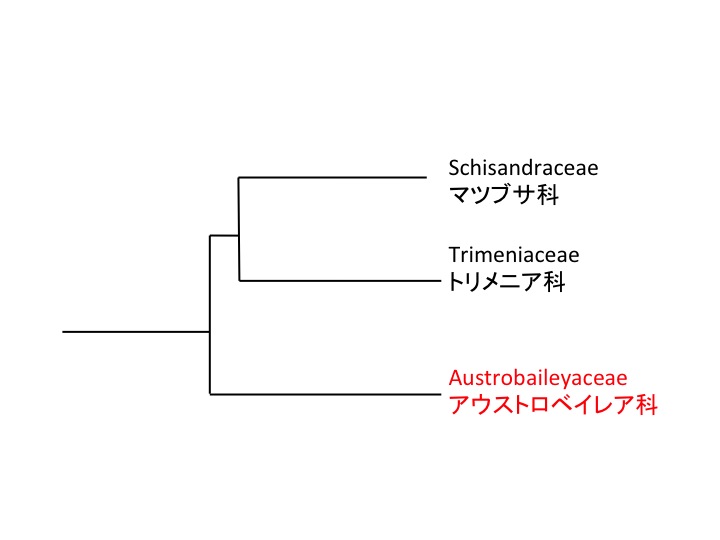
アウストロベイレア科は1科1属1種でオーストラリアの北部湿潤熱帯に自生し蔓性。「1. Flowers with internal staminodes 仮雄蕊が雄しべの雌しべ側にある」という形質が共有派生形質。
Austrobaileya scandens is a monotypic species in the Austrobaileyaceae, which is a liana and distributed in tropical Australia. “Flowers with internal staminodes” is synapomorphic character.
仮雄蕊は雌期には外側に開き、雌蕊が露出する。一方、雄期には雌蕊を多い雄蕊の葯が露出する。他花受粉促進のために仮雄蕊が機能している。
Staminodes open to expose a gynoecium in the female stage and close to cover a gynoecium in the male stage.
花被は外側から順番に形態を変える。ABCモデルは昆虫のホメオティック遺伝子による体節決定のように、ガク片、花弁、雄蕊、雌蕊が明確に器官分化している場合にはうまく適応できるが、器官形態が徐々に変化する場合にはうまく適用できない。また、シロイヌナズナのABCモデルのうちA機能については、他の被子植物で同じような機能を持っているかは不明であり、さらなる研究が必要である。徐々に器官形態を変化させる分子機構は植物独特かつ植物形態にしばしば見られるので、とても興味深い課題である。花被と雄蕊の境界は明瞭であり、ABCモデルでうまく説明できるように思われる。一方、仮雄蕊がどのような遺伝子によって制御されているのか、雄蕊と仮雄蕊、仮雄蕊と雌蕊の境界がどのように制御されているのかも不明である。
Staminode development as well as gradual morphological change in tepals are not well explained under the ABC model.
雄蕊は葉状になり、葯が向軸側に形成される。
Stamens are petaloid.
トリメニア科はパプアニューギニア、オーストラリア、フィジーに分布する。トリメニア属1属からなり、6種が知られる(Stevens 2001 onward) 。
Trimenia is monotypic in the Trimeniaceae, which includes 6 species and distributed in Papua New Guinea, Australia, and Fiji (Stevens 2001 onward) .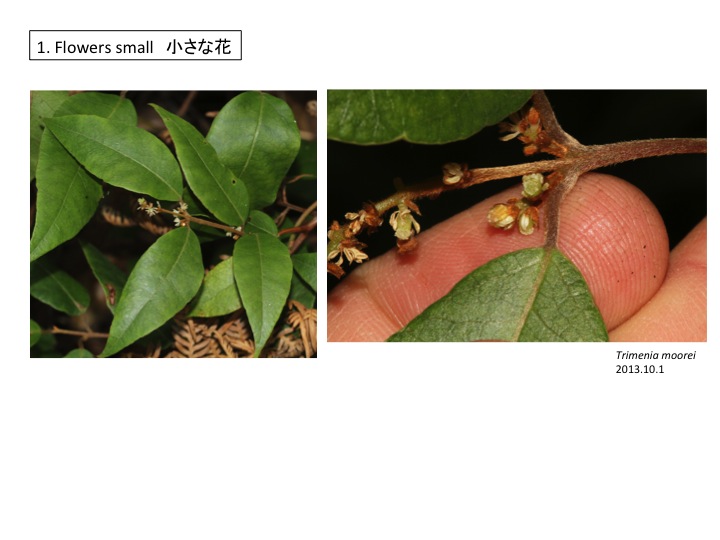
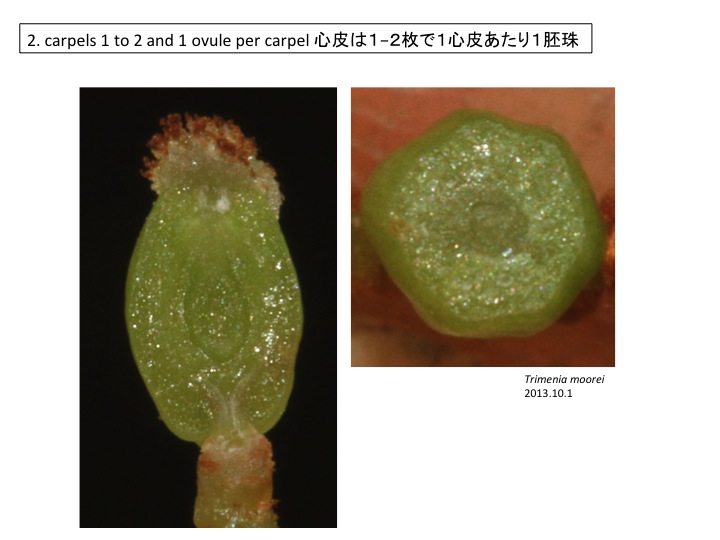
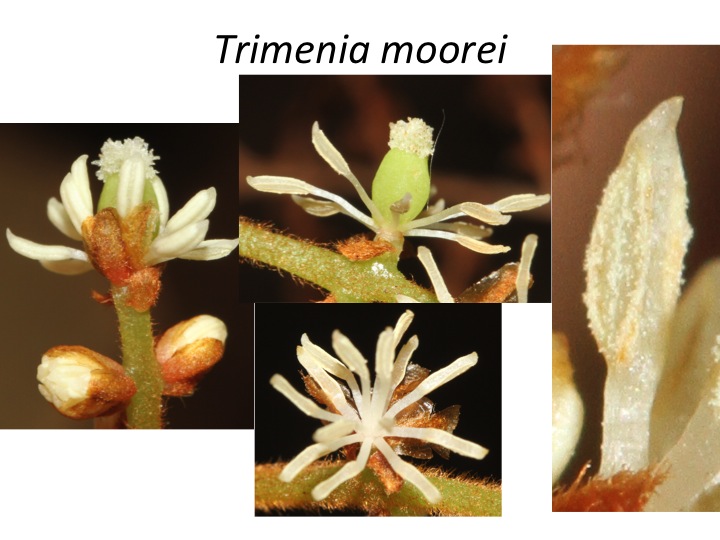
Trimenia属の葯は外向性、側向性の両方がある。時に内向性になることもある。Trimenia mooreiでは側向性である。茶色の花被は早落性。
Stamens are introrse, latrorse, or extrorse and vary between species. Stamens of Trimenia moorei is latrorse. Tepals in brown are caducous.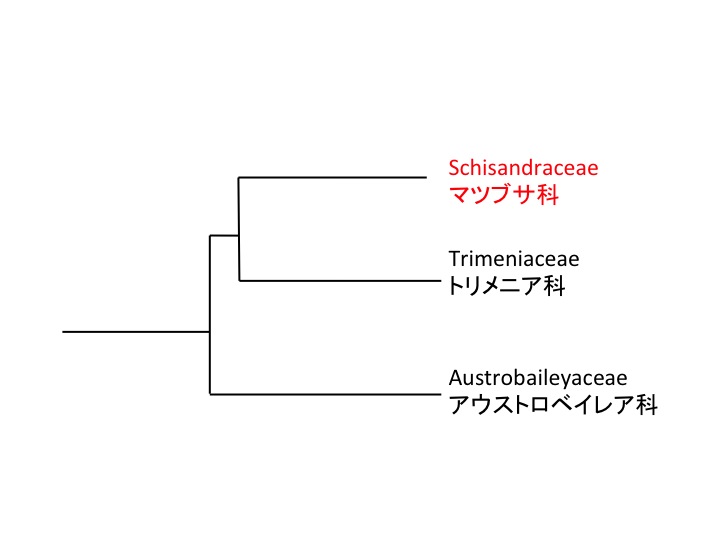
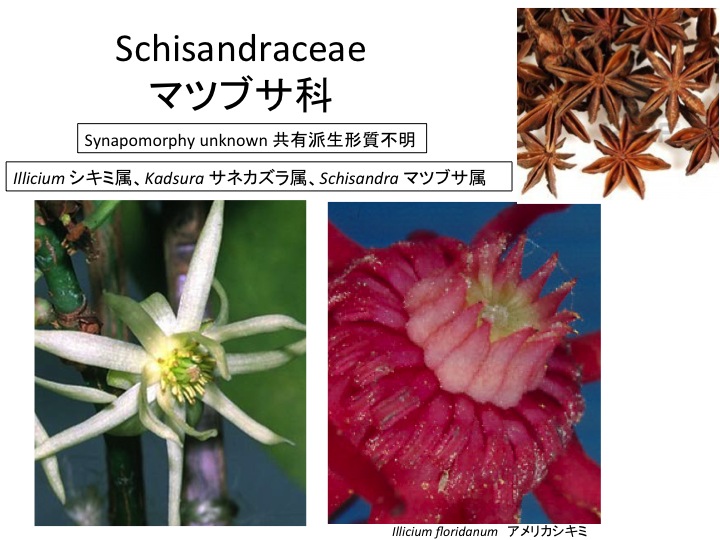
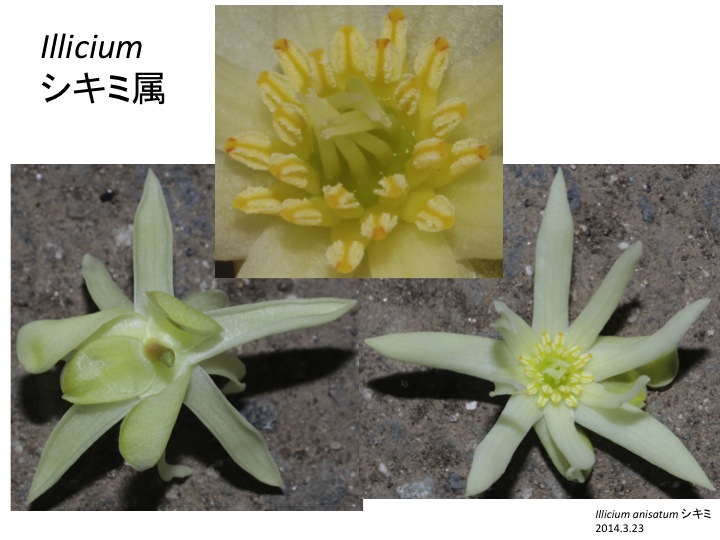
花被は外側のものはガク片的だが、ガク片と花弁の明瞭な区別はできない。花被は中心に近づくにつれてだんだん細くなる。
Morphology of tepals is gradually changed.

